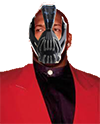Agreed and a perfect example of why so many films are bad: the writing is bad. There's less emphasis on studying great films, less reading of literature, and more focus on modern tropes or behaviors (see: the twitter-ization of so much film dialogue).
For such a complex film full of exposition, The Matrix doesn't have as much dialogue as we remember. A lot of it is action scenes interjected with some short dialogue. Mad Max: Fury Road takes a similar approach and probably has even less dialogue. I would argue the blueprint of these films can be traced back to Raiders, alongside the serials and westerns that inspired it. Brooding, silent heroes. Imposing, calm villains. Everything else is aesthetic.
You also see this in the science fiction films that inspired Villeneuve. There's not a lot of dialogue in Alien. Blade Runner's dialogue is pretty sparse compared to the focus on its visuals. Going beyond Ridley Scott's sci fi films...The Duelist is incredibly sparse on dialogue. Outside of Tim Curry's (amazing) scenes, Legend largely focused on the visuals too. The aesthetics of these films - the way they look, the way they sound, the vibe they portray - are all most important than what is being said. I think that's a pretty key aspect of a lot of the filmmakers who made the coolest shyt. Michael Mann comes to mind too. It seems like execs have decided you cannot make films like this today because the audience has to constantly feel like they're in a car with a main character who provides zingy, fun banter.
I don't think it really come from Raiders. It was part and parcel a part of the fabric of movie making then. Back then it was all about the artistry and show don't tell was a part of that artistry. You'll see it just as much in movies like Spartacus.
I mean, who remembers what Corleone said to the baker when he asked how he was gonna handle the thug at the beginning of The Godfather? we all just remember the beautiful Spanish curtains.
Despite your sarcasm, Godfather's introduction is actually a great example.
In a genius scene that sets up the Corleone family, we witness various characters and how they handle themselves.
Don is doing business at his daughter's wedding. He does deals for people. A favor me, a favor for you. Loyalty is paramount. All people come to the Don.
Sonny is off chasing tail. His wife chats with the girls about Sonny's shlong and Sonny is always off getting that thing in some girl. We learn about this from watching the movie. It's never said Sonny is a philanderer once and you don't actually hear his wife talk about his D. It's inferred through the visuals.
Michael, like always, is by himself, away from the family. He brings a blonde haired Ivy league broad to an Italian family outing. Sonny hates that Michael rejects the Italian part of himself and is embarrassed Michael would dare bring a non Italian woman to his sister's wedding. Again, this is inferred without one lick of dialogue.
In the opening scene there's a contrast between Don's office which is dark, lights off, which represents the dark dealings of the family, and the broad daylight of the wedding party, which is the official public face of the family. On one hand it's an Italian family that strives to embrace tradition. On the other, there's a dark, sinister part of the family that truly runs it: the crime and mob parts of it.
Yes, there's dialogue and yes it's important. But the visuals, the sound design, the atmosphere (the darkness of Don's office;etc.) help craft the movie into what it is. While watching the introduction you'll be surprised by how little actual dialogue there is outside of the Don's office.






